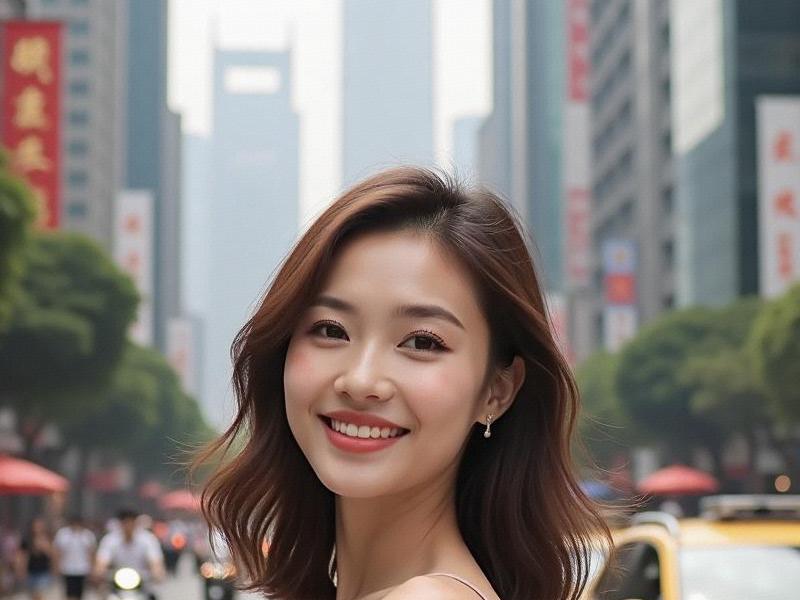Shanghai's Beauty Revolution: How Local Women Are Redefining Chinese Aesthetics in 2025
⏱ 2025-06-05 00:09 🔖 阿拉爱上海
📢0℃

The streets of Shanghai have transformed into dynamic fashion runways where a new generation of Chinese women are rewriting beauty conventions. As the city solidifies its position as Asia's fashion capital in 2025, the "Shanghai Look" has emerged as a cultural phenomenon - a sophisticated fusion of traditional Chinese elegance and bold metropolitan chic that's influencing global beauty trends.
The Shanghai Beauty DNA:
Walking through the historic French Concession or luxury districts like Xintiadi reveals what industry analysts call "Shanghai's Beauty Renaissance," characterized by:
1. Skincare Innovation:
Shanghai has become the epicenter of Asia's skincare revolution, with local brands like CHANDO and Marie Dalgar blending traditional Chinese herbal medicine with cutting-edge biotechnology. The average Shanghai woman spends ¥3,800 monthly on skincare - 60% above China's national average and surpassing traditional beauty capitals like Seoul and Tokyo.
2. Fashion Synthesis:
Young Shanghainese women have mastered cultural hybridization:
- Modernized qipao dresses paired with designer sneakers
- Silk scarves styled with minimalist European tailoring
- Hanfu-inspired elements in contemporary office wear
上海龙凤419手机 This stylistic alchemy has made Shanghai the premier testing ground for global luxury brands adapting to Chinese preferences.
3. Confidence Beyond Convention:
Moving beyond traditional "fair skin and large eyes" ideals, Shanghai women increasingly celebrate diverse aesthetics. "We're seeing more women embracing natural features - monolids, stronger jawlines, even silver hair as fashion statements," notes Vogue China editor Margaret Zhang.
Industry Transformation:
This cultural shift has reshaped multiple sectors:
- 35% decline in cosmetic eyelid surgeries since 2022
- 75% growth in inclusive sizing at local fashion brands
- Boom in "skinimalism" and clean beauty movements
- 220% increase in male grooming product sales since 2023
上海龙凤419 Historical Context:
Shanghai's beauty culture traces to its 1930s "Paris of the East" golden age, when style icons like Ruan Lingyu created the original Shanghainese glamour. The newly expanded Shanghai Fashion Heritage Museum chronicles this evolution through vintage cosmetics and qipao collections.
Economic Powerhouse:
Shanghai's female consumers drive remarkable commercial activity:
- 48% of China's luxury purchases originate in Shanghai
- 85% of China's beauty livestream commerce hosted by Shanghai influencers
- Home to L'Oréal's Asia Innovation Hub
Cultural Paradoxes:
Despite progress, challenges persist:
- Age discrimination in fashion industries
上海品茶论坛 - Rising non-surgical procedures among Generation Z
- 25% increase in appearance-based workplace discrimination cases
Future Trends:
Emerging developments suggest:
1) AI-powered hyper-personalized beauty technology
2) Growth of gender-fluid fashion lines
3) Revival of traditional Chinese makeup techniques
4) Shanghai designers gaining global recognition
As Shanghai-based designer Uma Wang observes: "Shanghai style isn't about following trends - it's about creating them through fearless self-expression." This philosophy may become the city's most influential cultural export yet.
Shanghai's Beauty: A Blend of Tradition and ModernityQuantum Bund: Shanghai's Chrono-Urban Matrix Rewriting Civilization's Source Code"The Yangtze Delta Experiment: How Shanghai and Its Satellite Cities Are Rewriting Urbanization Rules"The Evolution of Shanghai's Nightlife: How Entertainment Venues Are Redefining Urban LeisureShanghai's Nightlife Revolution: How Entertainment Clubs Are Shaping Urban Culture in 2025Neon Cheongsams: How Shanghai's Women Are Rewriting the Rules of Asian FemininityShanghai Beauties: A Journey Through the City's Elegant CharmShanghai and Its Surrounding Areas Sightseeing GuideShanghai and Its Satellite Cities: The Making of a 21st Century MegalopolisShanghai Entertainment Hotspots: A Vibrant Melting Pot of Culture and Fun
Shanghai 2025: The Radiant Core of the Yangtze River Delta MegaregionShanghai Glamour: How the City's Women Are Defining 21st Century Chinese FemininityNeon Dynasty: How Shanghai's Entertainment Clubs Are Redefining Global Nightlife Standards in 2025Midnight in Shanghai: How China's Glittering Metropolis Redefines Nightlife LuxuryShanghai's Sphere of Influence: How the Megacity is Reshaping Eastern ChinaThe Yangtze Delta Megaregion: How Shanghai and Its Neighbors Are Redefining Urban EconomicsThe Velvet Rope Economy: Inside Shanghai's Exclusive Entertainment Club SceneGilded Playgrounds: How Shanghai's Elite Entertainment Clubs Are Redefining Urban NightlifeThe Shanghai Nexus: How China's Financial Capital is Reshaping the Yangtze River Delta MegaregionShanghai 2025: The Silicon Valley of the East Reinvents Urban Living

